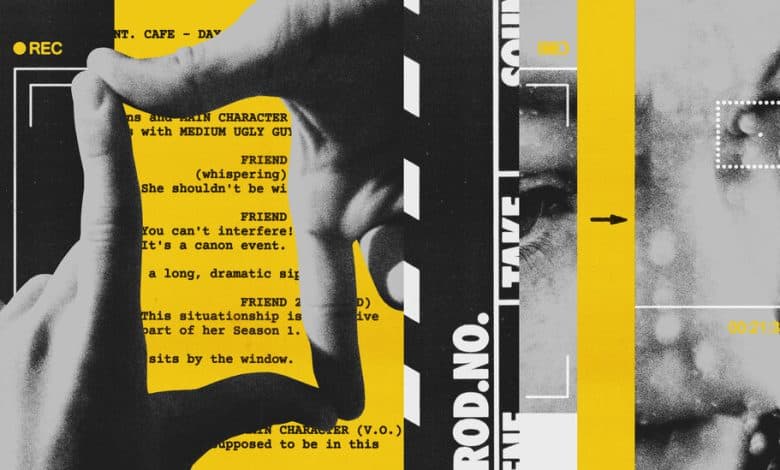How the Language of TV is Influencing How We See Ourselves

Last summer, I was struck by a video I came across on TikTok. In it, a 20-something flops faceup onto her bed. Her roots are grown out, her eyeliner is heavy and her gaze, vaguely forlorn, is intensified by a key light tinted blue. Her hand gropes around the adjacent night stand to silence her vibrating phone. Then the Netflix logo flashes, followed by a credit line: “A life written and directed by Beatrice Harrods.” A stop-motion sequence follows the passage of time: a vase of chrysanthemums, then roses; one candle, then another; an unfurling rug and the text “Season 2.” Cut back to Harrods: Her roots are touched up, and her gaze, now pointed at the camera, seems to relish being watched.
You see a lot of this on TikTok now: videos that describe ordinary life using the language of television. Scroll through, and you’ll find users charting the different “seasons” of their lives or highlighting the emergence of plot “arcs.” You may find users referring to the people in their lives as “casts” — including both passing encounters with “paid extras” and recurring appearances by “guest stars.” A friend’s unexpected appearance might be tagged “NOO! Ur not in this episode” or described, as one user had it, as the moment “when someone from Season 2 of my life somehow crosses over into Season 4.”
There is a certain permeability between art and life, and pleasure in perceiving it: We take satisfaction in recognizing our lives in onscreen plot lines, as we thrill to real-life moments that feel “just like a movie.” But TikTok’s video-based format has wildly amplified the impulse to collapse the distance between the two and imagine yourself as an onscreen character. The app’s tools make it easy for people to film and edit footage of themselves, narrating their own stories in breezy narrative beats — making life look like an episode of television. The result is a perfect ecosystem for watching and being watched, where once-passive audiences are encouraged to see themselves as the writers, directors and stars of their own motion pictures.
Perhaps there is therapeutic value in conceptualizing your life as a coherent story — one you can not only analyze but direct. One key piece of televisual jargon that has thrived online feels especially suited to this purpose. The “canon event” describes a crucial, sometimes traumatic occurrence that activates or shapes a person’s character. This kind of thinking may be related to therapy, but it has since been extrapolated wholesale into Hollywood tropes. Last year, the popularity of “Spider-Man: Across the Spider-Verse” — with its talk of critical “canon events” shaping the lives of heroes — inspired TikTok users to embrace the term. But in the transition from big to palm-size screen, the idea became a deadpan punchline, identifying not superheroic origin stories but the formative trials of ordinary youth. One video applied the term to “every teenage girl getting into her first situationship with a medium ugly guy that bears a striking resemblance to the rat from Flushed Away.”
There’s a related genre of video that encourages viewers to use the visual language of TV to romanticize their lives. This often involves footage of quotidian activities — waiting for the subway, restocking a fridge, pouring a beverage — elevated through production techniques: flattering close-ups, curated props, the amateur’s equivalent of dedicated hair, wardrobe and makeup departments. By reframing mundane activities as the well-lit choreography of a story’s protagonist, these videos render the everyday with a kind of glamour and gravity. If all the world is now a set, “main characters” like these are rewarded by the attention economy — a fact that has inspired some users to turn “main-character energy” into something like a life philosophy. One woman, in the first of 22 “episodes” dedicated to proselytizing her “seasons theory” on TikTok, described how she improved “Season 3” of her life by asking herself what Serena van der Woodsen and Carrie Bradshaw would do. (Those main characters, of “Gossip Girl” and “Sex and the City,” narrativized their own lives for a blog and a newspaper column.)
